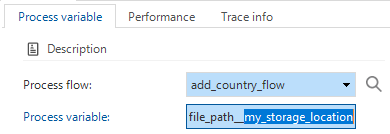Hello everyone,
In this sprint, we have added a /refresh_model API endpoint. Furthermore, PDF and HTML files now open in a new browser tab. Finally, we added a temporary solution that allows you to write files to file storage configurations using the Write File connector process action.
You can read more about Indicium's features in the Indicium user manual .
We will keep you updated regularly about Indicium's progress.
- Download Indicium Universal release 2022.1.10 here .
- Download Indicium Basic release 2022.1.10 here .
Table of contents
Indicium Universal
New refresh_model endpoint
The Refresh model functionality that can be accessed from the Developer ribbon in the Software Factory is now also available as an API endpoint in the Indicium Universal application tier.
To reload (refresh) the model, send a POST request to one of these URLs:
<web_app_root_url>/sf/<appl>/refresh_model
<web_app_root_url>/iam/<appl>/refresh_model
Print previews from a report open in a new browser tab
When opening a print preview from a report, this preview now opens in a new browser tab instead of being presented as a download, unless the browser cannot open this file type.
Extended file storage support using Write file
In this release, we added a temporary solution that allows you to write files to file storage configurations using the Write File connector process action. This particular solution is temporary because we want to provide an easier and richer solution in a future version of the Thinkwise Platform, after which we will automatically upgrade this temporary solution to the new solution.
To take advantage of this new temporary solution, perform the following steps:
-
Create a process variable and let the process variable ID end with a double underscore __ followed by the ID of the intended file storage location. Note that this does not work for database storage locations, only for File System, FTP, Azure and AWS storage locations.

Example of a file storage process flow -
In the Write File connector process action, use this process variable for the File path input parameter.
-
The value of the process variable must be the name of the file, as it will be written to the storage location. It can also be a relative path that ends with a file name. In that case, the relative path is created with the storage location as the base path, and the file is written there.
Valid examples are:
my_file.txt
my_sub_folder\another_sub_folder\my_file.txt
The rest of the Write File connector process action works as usual. The data provided in the File data input parameter is written to the storage location.
Minor fixes and tasks
- In the Indicium OData API, when you use the
\$applystandard computation (e.g.$apply=compute(year(date_of_birth) as year)) within a chained transformation, all other columns from the corresponding entity were no longer selected. This has been fixed. - Lookup columns were sometimes exported to Excel/CSV with a column header that used the translation of the lookup display column instead of the lookup column itself. For example, a
project_idlookup column could have the column heading 'Name' instead of 'Project'. This has been fixed.
